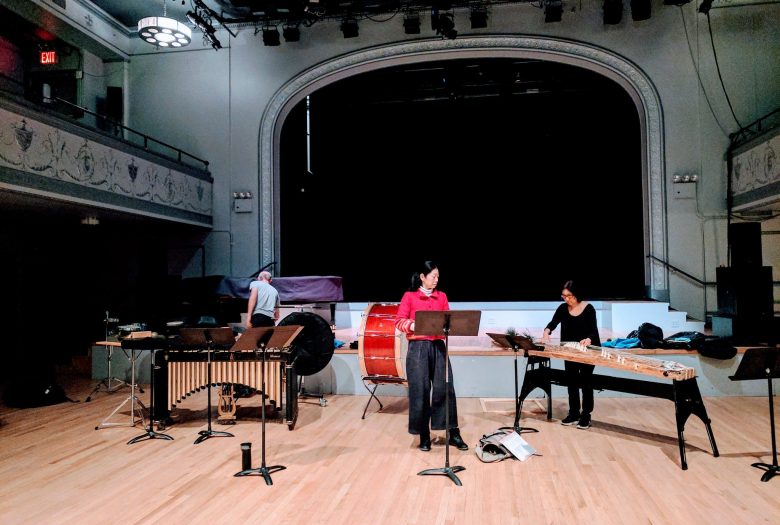A Line Becomes A Circle
A new Noh Opera (reading) by Miya Masaoka
Libretto: by Haiku poet Shiki (1867-1902)
Featuring Makiko Sakurai (Buddhist Shomyo chant, Noh)
Makiko is flying from Japan for this exclusive appearance one night only!
Ann Moss – Soprano
Chris Nappi – Percussion,
Miya Masaoka – Composition, Koto
Ethan Edwards – Live video projection
Miya Masaoka presents A Line Becomes A Circle, a Shomyo-Noh chamber opera featuring a libretto with Haiku fragments written by the composer’s ancestor, the poet Shiki Masaoka (1867-1902). Inspired by a Fulbright trip to Japan in 2016 to study Noh, the piece is both sparse and rich, weaving together bel canto opera with Shomyo and Noh vocalizations and percussion.
A Line Becomes a Circle pays tribute to Miya’s distant relative Shiki Masaoka, yet brings the text into a contemporary context by setting the words in both Japanese and English. Masaoka considers the highly condensed and minimal Haiku format to be “the non blank space,” akin to the materiality and minimalism in gagaku music, visual art, and poetry of the traditional Japanese arts. The title of A Line Becomes A Circle is a play on words from the quote by the Indian Hindu Monk, Swami Vivekananda, who lived in the same time period as Shiki Masaoka. Five lines is the number of lines of a Tanka poem, and there are five lines in a pentagon shape that can be curved to morph into the shape of a circle. The implies movement and motion — the act of transformation, evolution and embracing a new identity.
Miya Masaoka resides in New York City and is a classically trained musician, composer and installation artist. She has created works for traditional Japanese instruments, chamber ensembles, symphonic orchestra, mixed choirs, telematic performances and designed interactive wearable textiles. She has composed pieces using spatialization, sonification of data, and has mapped behavior of plants, brain activity, and insect movement to sound. She was a Fulbright Fellow to Japan in 2016, where she researched Noh, Gagaku and the mono chord koto. She is the Director of Sound Art at Columbia University, and has been a faculty member of the Bard College MFA Sound / Music Department since 2003.
In 2016, Miya was a Japan Fulbright fellow and studied Noh with Hisa Uzawa, a National Living Treasure, and Shomyo with a monk in Tokyo. She brings the Western operatic tradition and Japanese vocal approaches together in a new compositional work, with structural and formal considerations of Noh fully present. This is a New York premiere, with previous performances at the Theater of Yugen in San Francisco and the ICA, Institute of Contemporary Art, Philadelphia. Watch a short clip.

